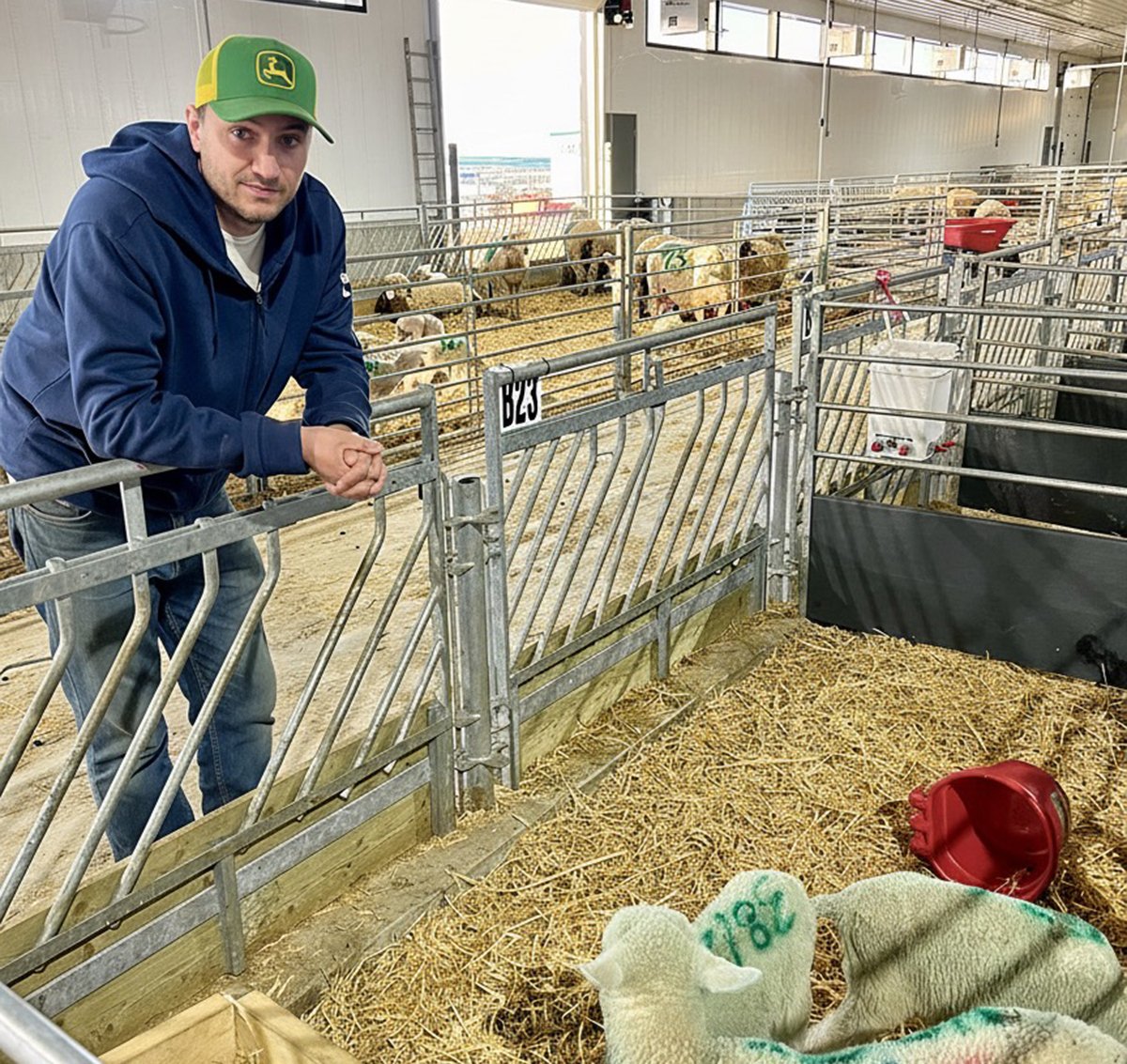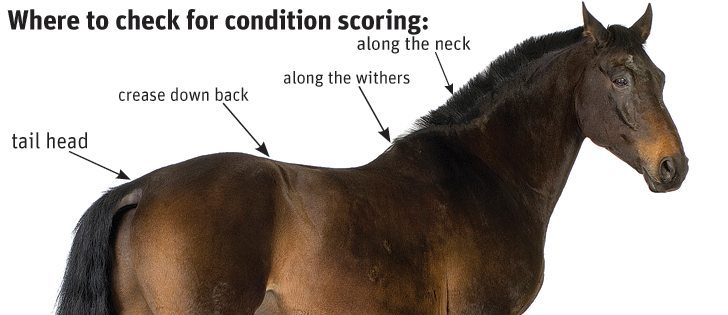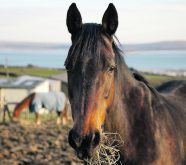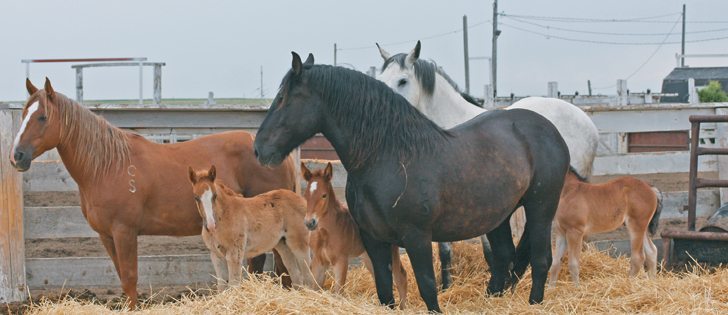A horse may need to be put on a diet if its back is so fat it looks like a tabletop, says veterinarian
COCHRANE, Alta. — Horses that eat too much and exercise too little put on weight that can affect their health.
“Feed by weight and feed judiciously. You can kill a horse with kindness,” says horse expert Ron Anderson of Calgary.
A horse should eat 1.5 to two percent of its body weight per day. For example, a 1,000 pound horse should consume about 20 lb. per day.
Horses require a lot of forage-based bulk in their diet, which provides adequate protein, energy, vitamins and minerals.
Overweight horses may have serious health problems such as skin problems or stress on limbs and internal organs.
Read Also

Solar, sheep provide valuable farm diversification
Eric Steeves says raising sheep on forages grown under solar panels provided economic stability and perhaps even saved his family’s fifth generation southern Alberta grain farm.
Veterinarian Brettly Battistone of Burwash Equine Services said body condition scoring can be used to evaluate body fat in relation to body musculature with a ranking system from one to nine.
It is based on fat deposition in the loin, ribs, tail head, withers, neck and shoulder. A score of five is moderate, but making a proper assessment requires a visual and physical examination.
“Half of it is looking at the horse and the other half is actually feeling what is it there, especially in the wintertime,” Battistone said.
A good hair coat can hide underlying problems, especially among older horses that are getting too thin.
The horse may look fine, but a hands-on check may discover prominent ribs. Alternatively, a horse becomes so fat that its back looks like a tabletop and there is trouble fitting a saddle.
Other factors need to be considered when deciding if a horse needs to go on a diet.
“The breed of the horse also depends how it deposits its fat,” she said.
It is also important to consider the horse’s level of activity. A high performance horse burns plenty of energy and may need supplemental grain compared to one that spends most of its time quietly living in a pasture.
Horse body condition scoring
1: POOR
Extremely emaciated. backbone, ribs, hip bones and tail head project prominently. Bone structure of the withers, shoulders and neck easily noticeable. No fatty tissues can be felt.
2: VERY THIN
3: THIN
Fat built up about halfway on vertebrae. Slight fat layer can be felt over ribs, but ribs easily discernible. Tail head is evident, but individual vertebrae cannot be seen. Hip bones cannot be seen, but withers, shoulder and neck are emphasized.
4: MODERATELY THIN
Negative crease along back. Faint outline of ribs can be seen. Fat can be felt along tail head. Hip bones cannot be seen. Withers, neck and shoulders not obviously thin.
5: MODERATE
Back is level. Ribs can be felt but not easily seen. Fat around tail head beginning to feel spongy. Withers are rounded and shoulders, and neck blends smoothly into the body.
6: MODERATELY FLESHY
May have a slight crease down the back. Fat on the tail head feels soft. Fat over the ribs feels spongy. Fat beginning to be deposited along the sides of the withers, behind the shoulders and along the neck.
7: FLESHY
A crease is seen down the back. Individual ribs can be felt, but noticeable filling between ribs with fat. Fat around tail head is soft. Noticeable fat deposited along the withers, behind the shoulders and along the neck.
8: FAT
Crease down back is prominent. Ribs difficult to feel due to fat in between. Fat around tail head very soft. Area along withers filled with fat. Area behind shoulders filled in flush with the barrel of the body. Noticeable thickening of neck. Fat deposited along the inner buttocks.
9: EXTREMELY FAT
Obvious crease down back. Fat is in patches over rib area, with bulging fat over tail head, withers, neck and behind shoulders. Fat along inner buttocks may rub together. Flank is filled in flush with the barrel of the body.
Source: Alberta Agriculture
















